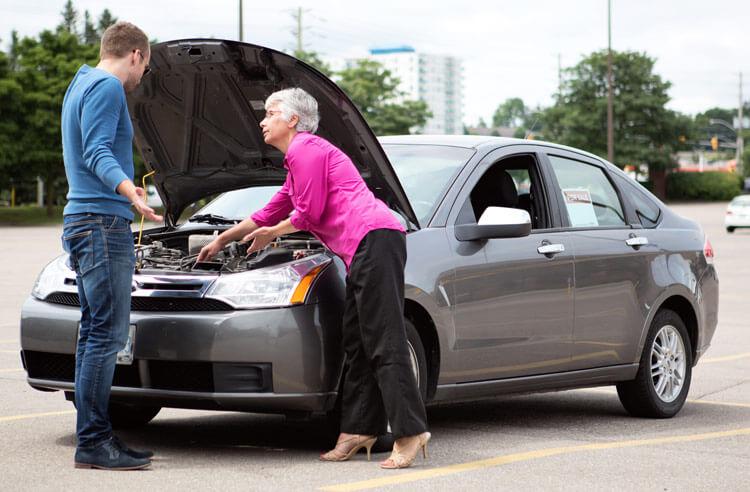Auto insurance requirements in Connecticut
Nearly every state requires its drivers to carry car insurance. Connecticut requires drivers to maintain liability insurance as well as mandatory uninsured and underinsured motorist coverage. All drivers must also carry proof of insurance that must be shown at the request of law enforcement officials. See Connecticut’s mandatory insurance limits below, as well as a breakdown of what they cover.
| Minimum Liability Coverage: 25/50/25 | Uninsured/underinsured motorist coverage (bodily injury) |
|
|
If you finance or lease your vehicle, your lender or leasing company could require you to carry physical damage coverage to protect their stake in the car.
What is uninsured/underinsured motorist coverage?
Unfortunately, not every driver carries insurance — or doesn’t carry enough. Because of this, Connecticut requires all drivers to carry uninsured/underinsured motorist coverage. This covers you if you are injured by an uninsured or underinsured driver.
Liability coverage in Connecticut
Connecticut requires all drivers to carry liability insurance coverage. If you cause an accident, liability pays for the lost wages or injuries sustained by another driver or their passengers. This is known as bodily injury (BI) coverage. Furthermore, liability also covers damage to the other driver’s vehicle, known as property damage (PD).
It’s important to remember that your liability insurance never covers your own injuries or damaged property. It only ever pays for harm caused by accidents in which you are at-fault.
What are state-mandated car insurance limits?
Insurance limits are simply the maximum amount that an auto insurer will pay to cover a claim. Each state determines its own coverage limits which can most of the time be increased for an added premium. These limits are usually split into three categories. In Connecticut, the minimum is listed as 25/50/25, reflecting bodily injury per person, bodily injury per accident, and property damage, which we break down further below. For liability insurance, your limits are as follows:
- Your per-person limit is the total amount of coverage available for any individual person that you harm in a car accident. If your accident injures more than one person, the total amount paid for all injuries is seen in the “per accident” limit below.
- The per-accident limit is the overall amount that your insurer will pay out for all bodily injuries that you cause in a single accident.
- The property damage limit is the total amount covered for physical damage that you cause to another individual’s property in an at-fault auto accident.
Do Connecticut’s required minimums provide enough coverage?
Connecticut’s required car insurance coverage is on par with most of the United States. However, that doesn’t mean that it fully protects you and your assets. This is particularly true for your liability limits, which can quickly be exhausted. Medical costs can quickly eat up the $25,000 per person limits, especially if you cause serious harm. The same goes for your uninsured coverage, which steps in to pay your medical expenses if the at-fault party cannot pay.
For these reasons, it's always a good idea to increase your limits. Doing so usually only costs a small amount and can go a long way in keeping you and your assets protected.
Connecticut’s penalties for driving without proof of insurance
Driving a vehicle without insurance coverage in Connecticut results in a fine between $100 and $1,000 and a license suspension of one month for a driver’s first conviction or six months for any subsequent convictions.
Further penalties and fees:
- License and registration reinstatement cost of $175
- Drivers who cancel insurance face a reinstatement fee of $200
- Not carrying proof of insurance ID cards leads to a $50 fine
Optional car insurance coverage in Connecticut
Connecticut only requires liability and uninsured/underinsured motorist coverages to be a legal driver in the state. However, there are a number of optional coverage that can provide further protection. Have a look at some of the more common types of car insurance coverage below.
- Comprehensive: Comprehensive coverage covers physical damage to your vehicle. This coverage typically helps with non-collision damages your vehicle sustains (with the exception of collisions with animals).
- Collision: For damages resulting from a collision with another vehicle or fixed object, collision coverage can help with repairs.
- Loan/lease coverage: Also known as gap coverage, loan lease payoff is a helpful coverage if you are leasing or financing your vehicle as it protects you against losses due to depreciation. This coverage works by paying the difference in the actual cash value of your vehicle and the amount you still owe on the loan.
- Medical payments: Medical payments (med pay) goes towards any medical bills or funeral expenses you or those in your vehicle incur up to the policy limits (usually between $5,000 and $10,000). This coverage is usually provided regardless of who is at fault.
- Rental car reimbursement: If your vehicle is unable to be driven, this coverage covers the cost of a rental (up to your policy’s limits).
- Roadside assistance: If you find yourself broken down on the highway, this coverage can typically help with towing, fixing flats, or jumping batteries, though specifics will vary by company and policy.
Why it's important to adhere to Connecticut’s car insurance laws
If you want to stay on the correct side of the law, carrying the right amount of car insurance in Connecticut is a must. Not only will it keep you legal, but it will keep you and your assets protected. If you are worried about the cost of all this additional coverage, don’t fret. The Zebra can help you find insurance quotes from a number of top insurers, allowing you to compare policies to find the best auto insurance plan at the best price.





